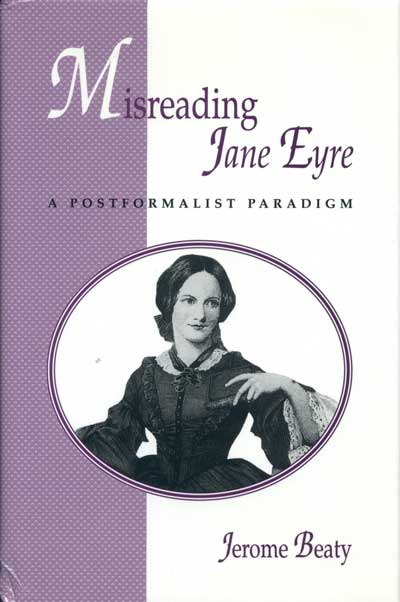Misreading Jane EyreA Postformalist ParadigmJerome BeatyTheory and Interpretation of Narrative |
 4/15/1996 259 pp. 6x9  $24.95 paper 978-0-8142-0693-5 Add paper to shopping cart Shopping Cart Instructions Review/Change Shopping Cart & Check-out | |||
|
This revisionary look at Charlotte Brontë’s classic novel offers a rigorous new reading and an interrogation of the reading process. Examining both literary historical contexts and contexts produced within the structure of the narrative itself (and incorporating a number of literary critical strands, including historical scholarship, reception aesthetics, Iserian phenomenology, Bakhtinian dialogism, and traditional formalism), Beaty resituates the common feminist reading of Jane Eyre. In the first section, “Intertextualities,” Beaty displays a proficient knowledge of the intertextual relationships between Jane Eyre and numerous, often obscure, works from the late eighteenth and early nineteenth centuries. While tracing the sequence of the narrative he contextualizes the novel, showing how Brontë’s work contains motifs and scenes similar to such contemporary narratives as female rebellion tales, orphan tales, governess tales, vampire tales, and love stories. “Strategies of the Text,” the second section, considers contexts created within the novel. Beaty looks at the dialogic display between the young, the maturing, and the mature Jane, the narrator. In addition he examines the ways various scenes recall each other, “spatializing” the narrative. This leads to the larger question of how the narrative’s configuration as a whole affects readings and leads to Beaty’s own (mis)reading. Beaty argues that while all of the elements he brings together are imperative, they prove to be incompatible, can never claim to be definitive, and will inevitably end in a misreading. While some of his interpretations run counter to current orthodoxies, his arguments are always intelligent and illuminating, and he writes with clarity and directness. Misreading “Jane Eyre” offers a rich and useful paradigm, and a provocative revisionary reading that furthers our understanding of Jane Eyre and of reading and narrative practices. | ||||

